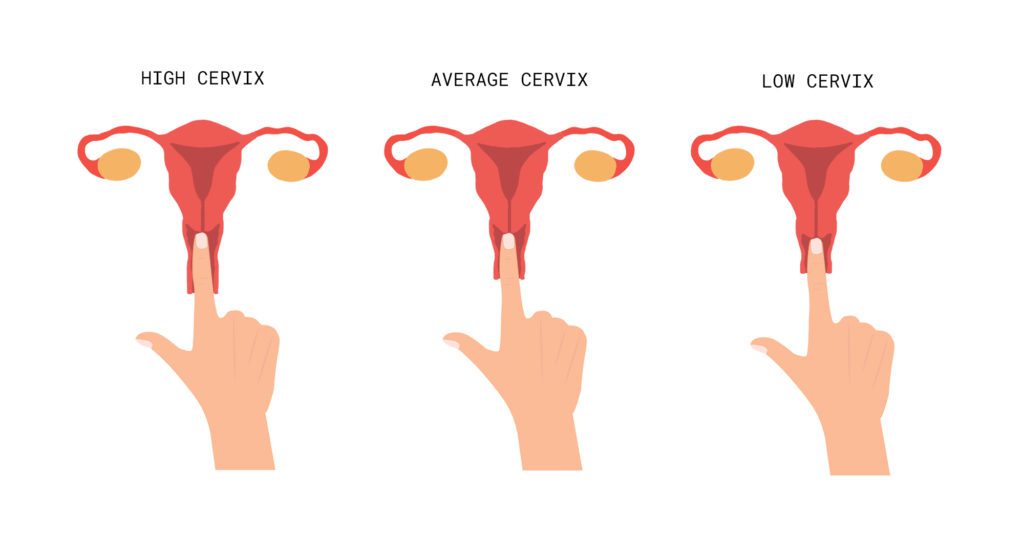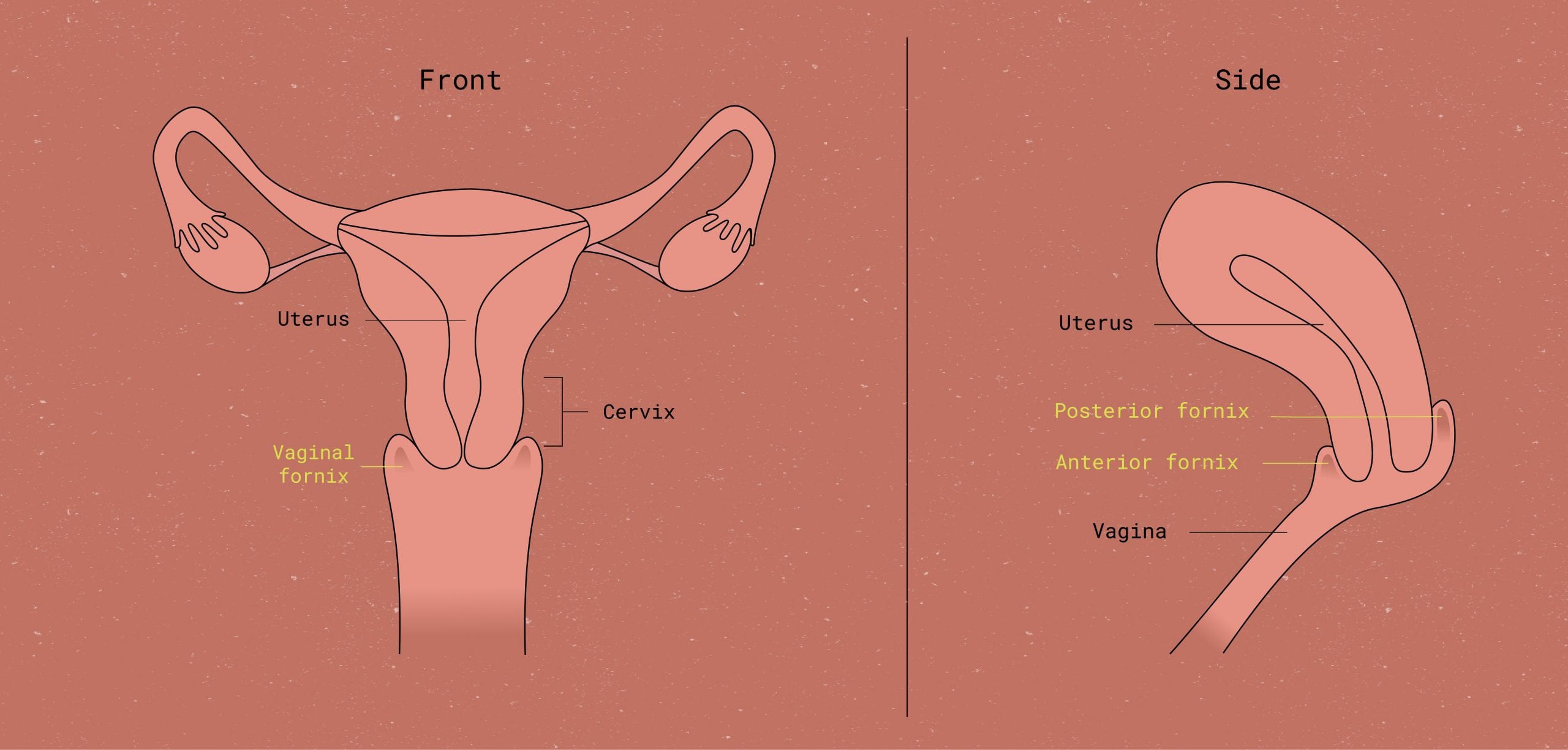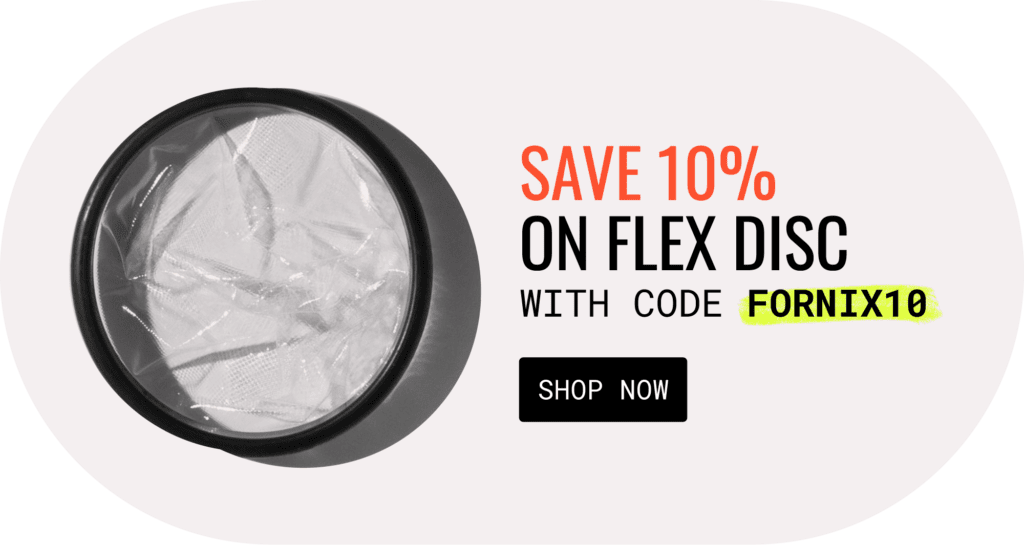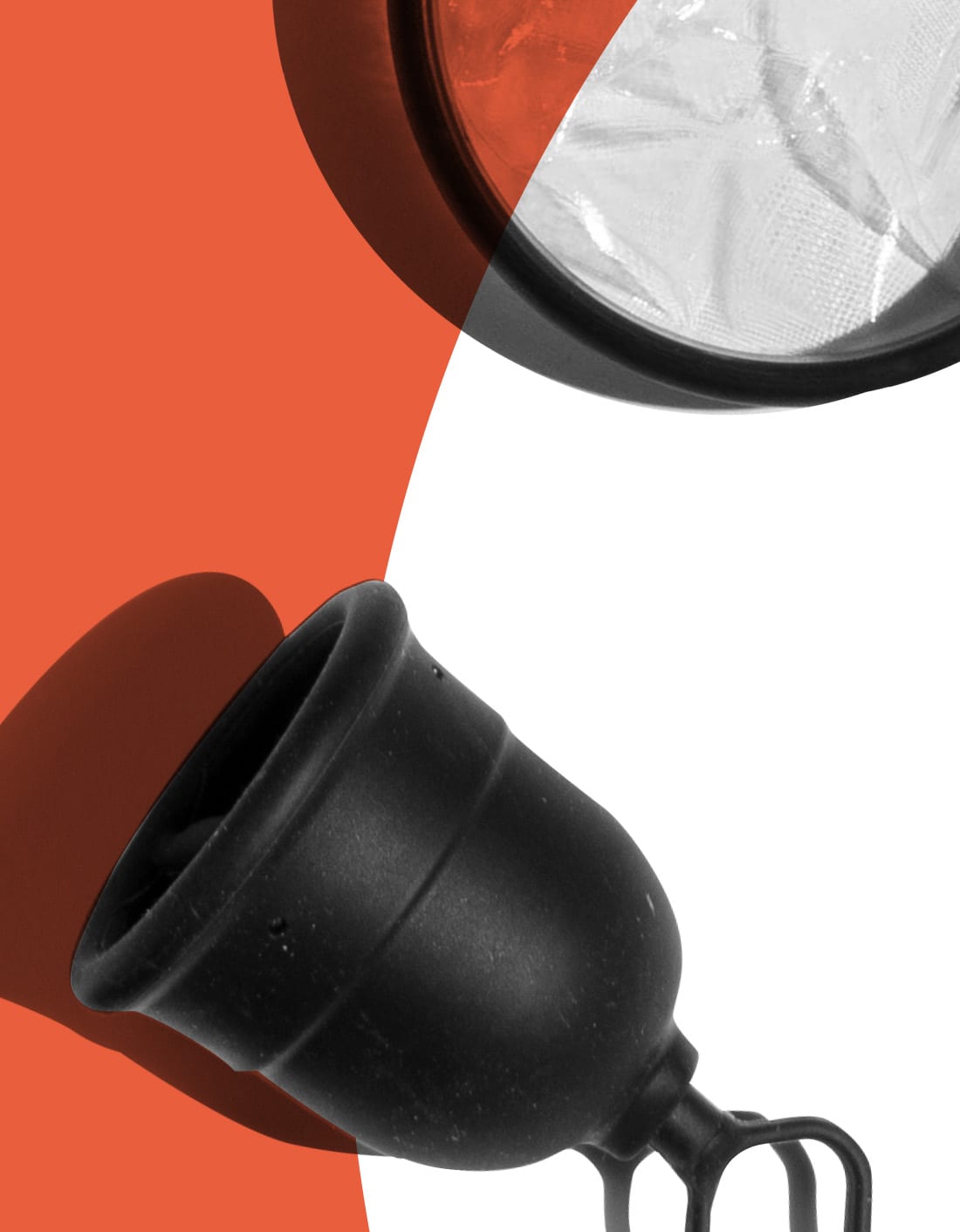It’s Cervical Health Awareness Month—so why not get familiar?
Your cervix: Do you think about it often? We’re guessing probably not
But this month, your cervix deserves a little extra attention. That’s because January is Cervical Health Awareness Month—and you can bet that the team here at Flex® isn’t about to let that opportunity pass us by.
What, exactly, should you be aware of when it comes to the cervix? A few things!
First and foremost, Cervical Health Awareness Month was initiated in order to raise awareness of cervical cancer, which affects more than 14,000 people in the United States each year. 1 One of the best ways to prevent cervical cancer is by partaking in routine screenings: AKA, get your Pap smear or HPV testing done regularly.
According to the American Cancer Society, people with a cervix aged 25 to 65 “should have a primary HPV test performed every 5 years. If primary HPV testing is not available, screening may be done with either a co-test that combines an HPV test with a Papanicolaou (Pap) test every 5 years or a Pap test alone every 3 years.” 2 Visit the ACS website to read more about HPV testing and Pap screening guidelines.

Beyond maintaining a Pap smear schedule as recommended by your provider, is there anything else that can be done to promote cervical health? Yes!
In this article, we’ll walk you through exactly how to get hands-on with your cervical anatomy and get to know how it usually feels during different stages of your menstrual cycle. Knowing your body is an invaluable tool for overall health and wellbeing—plus, getting a little more comfortable with your vagina and all of its parts will benefit you in other scenarios, too (like during sex…or when testing out a new period product for the first time).
Every vagina is unique, and so is every cervix. Here’s how to introduce yourself to yours via manual self-checks at home. Let’s get started.
Why you should be checking your cervix
First things first: What is the cervix, where is it, and why is it important? If you haven’t yet, read our full-length guide to cervical anatomy here.
The TL;DR is this: The cervix is a structure that separates the upper part of the uterus from the vaginal canal. It looks a little bit like a donut, but one with a very small hole.
It is important because it’s part of your reproductive system’s defense against bacteria and other harmful substances that could enter your body through your vagina. Without the cervix in place as a barrier, your uterus would easily become infected.
Certain things can, of course, pass through the cervix into the uterus (or vice versa). Sperm, for instance, needs to pass through the ectocervix and into the endocervical canal before it reaches the uterus. Roughly nine months later—should a pregnancy take place—the cervix dilates to allow a newborn baby to pass through in the other direction.
Your cervix also lets menstrual fluid out during your period. And for all you IUD wearers out there, the cervix is where your IUD passed through during placement.
Seems pretty straightforward. So, why is it a good idea to check your cervical opening manually? Because your cervix changes constantly throughout your menstrual cycle, and everyone’s cervix is different.
Cervix position: How far is the cervix from the opening?
You might have a “high” or “low” cervix across the board, or it may go from super low during your period to super high while on your fertile window. It might be angled up or down on different days, and may feel softer or firmer at various times throughout your cycle.

By regularly examining your cervix, you can detect any abnormal changes and discuss them with your doctor. You’ll also become more aware of how your cycle phases affect your vagina physically. For example, you may notice differences in the feel of your cervix and vagina on different days of your cycle.
Cervical checks provide insight into your internal anatomy, helping you understand why certain sex positions feel better, why a menstrual cup may leak, and even predict the start of your period. Check out these articles for more information on what you can gain from cervical intel.
- The best sex positions for each phase of your cycle
- Why your menstrual cup is leaking & how to prevent leaks
- Hit the C-spot: How to have cervical orgasms during sex
If you’re pregnant, you may notice even more significant changes to your cervix in early pregnancy and toward the end of it (i.e. when checking for cervical dilation). There are several other reasons why your doctor or midwifeA nurse midwife is a registered nurse who goes on to receive a master’s degree in nursing and specializes in midwifery. Midwives work with pregnant people before, during, and after childbirth, and may assist with or perform the delivery of a baby either at a birthing person's home, a birthing center, or at a hospital. will perform cervical checks during pregnancy, but we won’t delve into all of them in this particular article. Talk to your doctor or Ob/Gyn to learn more.
How to check your cervix: A step-by-step cervical check guide
First, you need to be comfortable with your own vagina. If you’re new to this, it’s normal to feel nervous or uncomfortable. Keep in mind that the vagina is similar to other cavities in your body, like your nose or mouth. Take it slow during your first few attempts.
Here are some helpful tips before you get started.
- Grab a notebook or journal (or open up a new note in your phone) to record your findings.
- Ideally, aim to check yourself once every other day, or at least once per week, for the first few months. This way, you’ll be able to pick up on subtle changes that occur during the different stages of your cycle. Try to perform all your self-exams at the same time of day.
- Keep your nails trimmed short to avoid poking or scratching yourself!
- Don’t do a manual check when you have a vaginal infection: Wait for things to clear up, first.
- Keep in mind that your cervix may change position during and after sex. After sex, it may be higher up and feel different than usual.
What does the cervix feel like?
Before we jump into the step-by-step cervical check process, it might be helpful to have a sense of what you’re feeling for.
While your vaginal walls—which you might be more familiar with—have a spongy feel and a little bit of texture to them, the cervix feels like a smooth, firm “donut” all the way at the back of the vaginal canal. Some people compare it to the feeling of the tip of your nose, but with a texture that’s similar to the inside of your cheeks. Unlike your vaginal walls, the cervix doesn’t have as much “give” to pressure.
During ovulation, your cervix moves higher up and becomes softer. It may be harder to reach, like the firmness of your lips (the ones on your mouth!).

What to look for when checking your cervix
When checking your cervix, you don’t need to write a full diary entry. Here are the key things to note:
- How far is the cervix from the opening: You can measure in terms of knuckles on your middle finger, if that’s easiest. This will help you understand if you have a high or a low cervix.
- The angle of your cervix: What’s your cervical position? Is it perpendicular to the floor? Or poking “upwards” so that it feels more parallel to the floor? Or somewhere between?
- How much cervical mucus, AKA discharge, you feel—as well as the color and consistency of the discharge: Is it clear and thick, like an egg white? Watery? Paste-like?
- How the opening of your cervix feels: Normally your cervical opening will feel like a thin slit, but it may at times feel a bit more open, especially during your period as well as just before ovulation.
- Firmness vs. softness: As mentioned before, your cervix tends to feel softer around ovulation and firmer during menstruation and the luteal phase.
- How much room you feel around your cervix, in the space called the vaginal fornix, and whether there’s more room towards the front (the posterior fornix) or the back (the anterior fornix)—this will correlate with its angle.
- Any pain when palpating the cervix: Checking and feeling it may feel weird at first, but it shouldn’t be painful. If it is, mention it to your healthcare provider.
- Where you are in your menstrual cycle. A cycle tracking app helps with this, but you can also do the math if you know when your last period started. Cycle Day 1 = the first day of menstruation.
These findings are for your own reference. Share them with a healthcare provider if you notice something unusual. Remember to include the date and time at the top of each entry.

How to check your own cervix manually
Now that we’re fully prepped, it’s time to get hands-on! Here’s how to check your cervix manually (with your hand/fingers).
Pro tip: One of our favorite times to perform a cervical self-exam is right after showering, when muscles are already relaxed and you’re nice and clean. You can check things out while showering, too, but the running water might make it harder to pick up on subtleties in firmness or discharge.
Step 1. To prevent bacteria from spreading, wash your hands with soap and water. If desired, apply a small amount of body-safe lube to your finger for easier insertion.
Step 2. Find a comfortable position to reach your cervix. Depending on your cycle, it may be high up in your body. Try squatting with wide feet or sitting on the toilet/edge of the bed. Standing with one leg on the edge of the bathtub is another option.
Step 3. Take a deep breath if you need to and try to fully relax your pelvic floor muscles.
Step 4. Insert your finger into your vagina until you can feel the cervix. Feel for the “back wall.” If it’s still out of reach, try changing your body position while keeping your finger inserted. You may be able to feel it by circling around it or by feeling for the small dent—the cervical opening—in the middle.
Step 5. Run through the list above to make sure you’re taking note of everything we mentioned: Height, angle, discharge, firmness, fornix space, and opening size.
Regarding cervical height, here are a few points to note: When it’s low, you can feel it with one finger to the first knuckle. When it’s high, you may need your entire finger or not be able to reach it at all.

How to visually check your cervix: taking a closer look
In most cases, a manual self-check is sufficient to familiarize yourself with your cervical anatomy. However, if you’re interested in tracking cervical changes more closely, you can visually examine it yourself using a few tools.
You’ll need:
- A speculum
- Body-safe personal lubricant
- A hand mirror
- A small flashlight
- Optionally, a partner to help out
Here’s an excerpt from the Beautiful Cervix Project explaining how to visually check your cervix:
“If you are at home, assume a semi-reclined position, with your sacrum on a flat surface and your knees open, heels together.
It is helpful to first insert your finger into your vagina and feel the location of your cervix (will feel like a little nub protruding into your vagina and may be as hard as the tip of your nose or as soft as puckered lips and will likely be 3-6 inches inside your vagina).
Insert the speculum (handles up) into the vagina, aiming for the general location you just discovered with your finger; using a lubricant may help it slide in easily. Press the handles together to open the mouth of the speculum until you hear a ‘click,’ which indicates it is locked and will remain open. Hold the hand mirror between your legs while the speculum is inserted and angle it so you can see the inside of your vagina.
Shine a flashlight at the mirror so it reflects off of it and illuminates your vagina. Hopefully the cervix (looking like a little wet pink doughnut) at the back wall of the vagina will be visible.
Cervices are not always mid-line, so if you cannot see it right away, you may need to angle the speculum differently, pull it out a little, or reinsert it at a different angle.”
You can even take a photo with a little help from a partner and a camera with flash. Beautiful Cervix Project has a video that shows exactly how to do it.
When is the best time to check your cervix?
The best time to check your cervix is ideally after your period has ended and before ovulation begins. It’s important to check it at the same time each day to track changes in cervical position, texture, and openness throughout your cycle.

Cervical self-exams: Key takeaways
Yes! You made it through your first cervical self-exam and now you’re armed with tons of valuable info about how your cervix is oriented, how it changes throughout your cycle, and what that means for you as an individual. We hope you’ll keep up the habit of checking your cervix at least once or twice per month.
More importantly, keep regular check-ups on the books with your primary care provider or Ob/Gyn to perform cervical cancer screenings and don’t be afraid to ask questions during your appointments. There’s no such thing as a weird or embarrassing question when it comes to your vagina and your health.
To learn more about Cervical Health Awareness Month, check out this resource center at the American Cancer Society website and donate if you can.
This article is informational only and is not offered as medical advice, nor does it substitute for a consultation with your physician. If you have any gynecological/medical concerns or conditions, please consult your physician.
© 2023 The Flex Company. All Rights Reserved.
- National Cervical Cancer Coalition. (n.d.). Cervical health awareness month. https://www.nccc-online.org/cervical-health-awareness-month/[↩]
- American Cancer Society. (n.d.). The American Cancer Society guidelines for the prevention and early detection of cervical cancer. https://www.cancer.org/cancer/cervical-cancer/detection-diagnosis-staging/cervical-cancer-screening-guidelines.html[↩]








